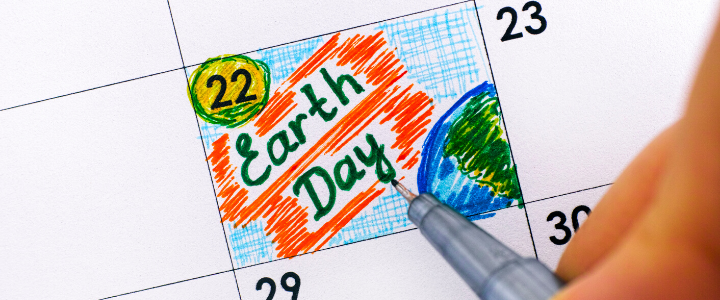When the first Earth Day was celebrated in 1970:
- 10% of the U.S. population took to the streets to mobilize and protest “environmental ignorance.”
- the environmental movement was launched, resulting in the Clean Water Act, the Clean Air Act, and the Endangered Species Act
Now, at the age of 50, the Earth Day(Open Link in new tab) Planning Committee is preparing for campaigns that “will activate over a billion people” worldwide.
There’s never been a more dire reason to participate. Evidence of climate changes are evident around the world. The Bulletin of the Atomic Scientists recently stated that their Doomsday Clock(Open Link in new tab), which has assessed threats to humanity and the planet since 1947, is closer to the end (their version of apocalypse) than ever. Species continue to go extinct rapidly(Open Link in new tab), and changes in weather (Open Link in new tab) (which affects everything else) are alarming.
Seventeen-year-old Greta Thunberg, 2019’s Time Person of the Year(Open Link in new tab), has been recognized as the leader of climate change awareness, and she’s just one of many. There are several young people on the front lines of this movement, including these five activists from around the world(Open Link in new tab).
Although the facts are agreed upon by 97% of climate scientists(Open Link in new tab), the affirmed science can sometimes be difficult to understand and envision, and can be especially challenging to explain to students. We’ve pulled together some resources to help with Earth Day planning for you and your students:
- Earthday.org(Open Link in new tab) provides information on all things Earth Day, and its 50th Anniversary theme: Climate Action. The Action Hub(Open Link in new tab) is where you will find resources for all sorts of event planning, posters, and templates for just about anything Earth Day-related.
- Nasa.gov(Open Link in new tab) has a whole section of resources specifically for educators and students, including a special site called Climate Kids(Open Link in new tab).
- Scholastic has a content area just for teaching(Open Link in new tab) about Earth Day, broken down by grades.
- The old stand-by, The Farmer’s Almanac, has information on Earth Day history, and activities.(Open Link in new tab)
- We are Teachers has compiled a fabulous list of Earth Day Children’s Books(Open Link in new tab).
There are several more, but as always, be sure to check the reliability of all resources. We feel pretty confident about the ones we have shared.







